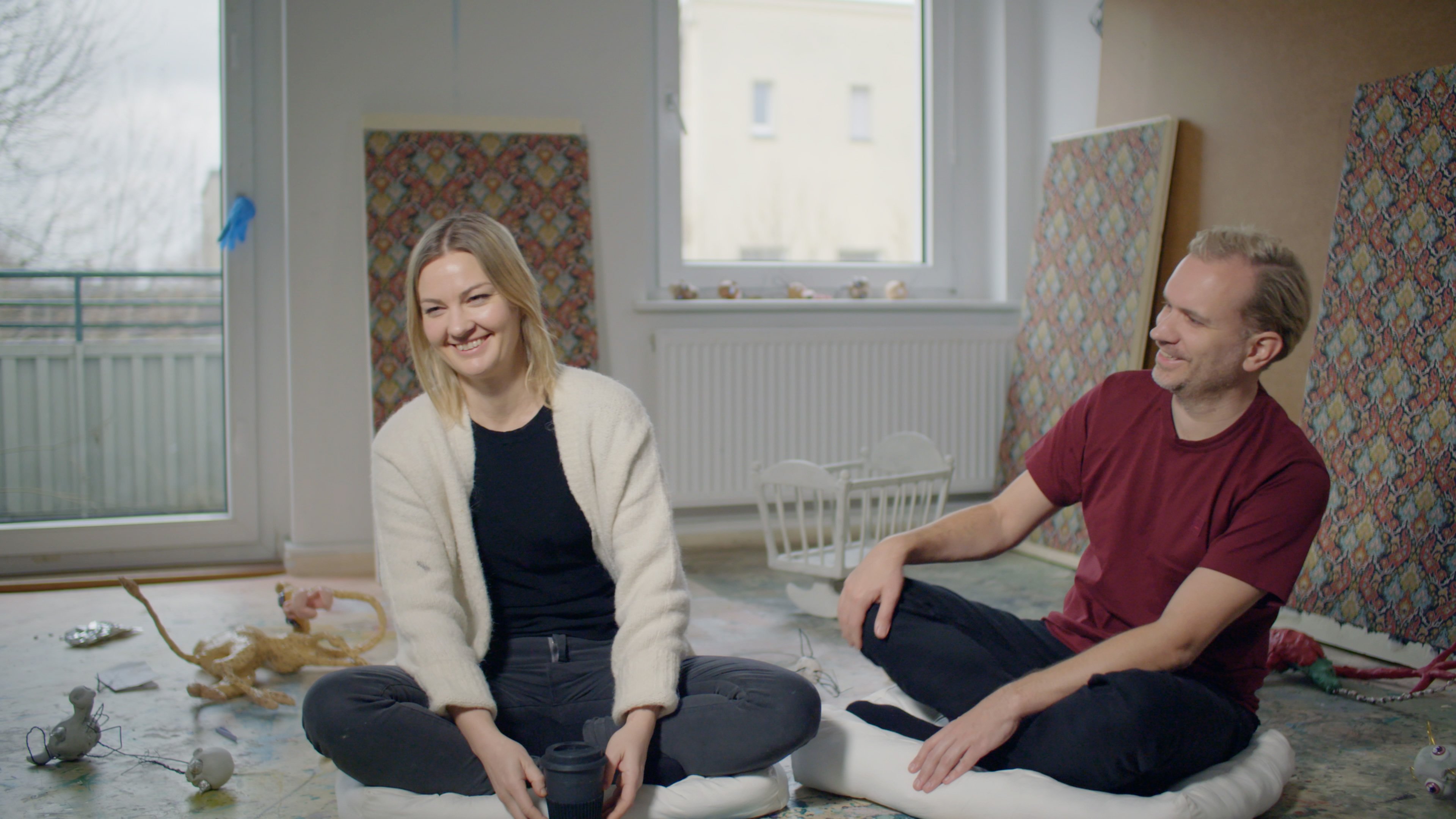
In artist Nathalie Djurberg‘s world, a misshapen cast of characters run riot.
Clumsy and raunchy, the clay people and animals are sexually liberated transgressors of an alternative reality, and each is painstakingly crafted using photography and stop-motion animation. The universes that the Swedish-born artist creates often parallel a much darker, more grotesque version of classic mythologies and fairy tales, all set to a techno-pop soundtrack composed and produced by Djurberg’s creative partner, Hans Berg.
In an exclusive interview with Art21, the duo explained how their individual skills blend seamlessly to create fantastical tableaux. From the first time she and Berg collaborated, he provided the a missing component to her work.
“Even though images evoke emotions, sounds do it even more,” Djurberg explains. “Hans is an expert manipulator in that way.”
Nathalie Djurberg & Hans Berg, Dark Side of the Moon (2017). Courtesy of the artists and Tanya Bonakdar Gallery.
Berg, who is also from Sweden, first moved to Berlin for the underground music scene, but for the self-taught artist, music was only a hobby—until he met Djurberg. The pair have been working together for more than a decade, with institutional shows around the world, including one at the Baltimore Museum of Art, where “Nathalie Djurberg & Hans Berg: Delights of an Undirected Mind” is now on view.
The show includes an immersive gallery where animated films are shown on loop, and frenetic lights and music accompany an installation of ceramic objects, giving the illusion that you’ve stepped out of a museum and stumbled into one of their hyper sexual, darkly sinister, and often very funny multi-media works.
For both artists, the works are an avenue to explore aspects of human interaction that are typically tamped down by social pressures.
“Taboos exist because we are really scared of being that ourselves,” Djurberg tells Art21. “I don’t think that emotions or feelings should be controlled. They should be felt and looked at. It’s when they’re hidden that they are a problem.”
Watch the full segment, which originally appeared as part of the “Art in the Twenty-First Century” television series on PBS, below. “Nathalie Djurberg and Hans Berg / Delights of an Undirected Mind” is on view at the Baltimore Museum of Art through May 26, 2019.
This is an installment of “Art on Video,” a collaboration between artnet News and Art21 that brings you clips of newsmaking artists. A new season of the nonprofit Art21’s flagship Art in the Twenty-First Century television is available now on PBS. Watch full episodes and learn about the organization’s education programs at Art21.org.